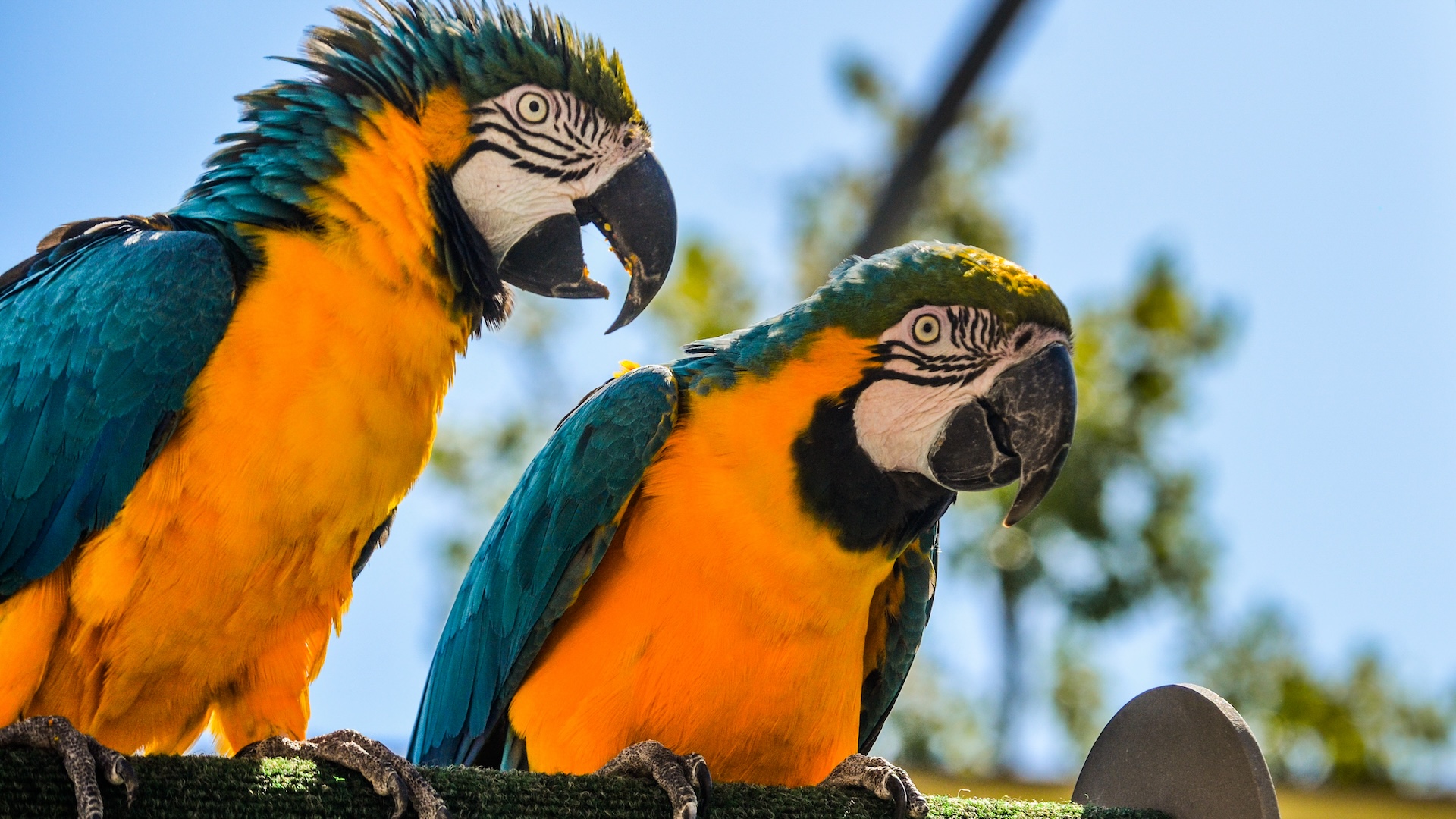In the wild, parrots squeak, squawk, whistle and trill to communicate with their flockmates. These highly social birds rely on their complex communication systems to get food and warn of potential dangers, and research even suggests parrots use “signature contact calls” to refer to each other, similar to how humans call each other by name.
But when parrots live with people, they don’t have any flockmates to learn “parrot” from. Instead, they use their highly specialized brains to pick up on human speech. So when parrots talk, do they really understand what they’re saying, or are they just masters of mimicry?
The answer depends on the individual parrot and how it’s trained — though research points toward parrots having a surprising ability to understand human speech and use words and phrases appropriately.
“Birds that are trained appropriately can learn amazing amounts of speech,” Irene Pepperberg, a research professor of psychological and brain sciences at Boston University, told Live Science. Pepperberg has spent her career training parrots to use human language. Her most famous study participant, Alex the African gray parrot, was known for his prolific communication skills.
Alex understood more than 100 words for different objects, actions and colors. He could count up to six and had a basic understanding of the concept of zero. When given an object, Alex could identify its color, shape and material, as well as accurately compare multiple objects using terms like “bigger” or “smaller” and “same” or “different.”
Alex was trained using a careful methodology that ensured he understood that specific words applied to certain objects or concepts. But experts say that even everyday pet parrots can pick up on certain features of human language.
Related: Why do parrots live so long?
Learning words and phrases
Erin Colbert-White, an associate professor of psychology at the University of Puget Sound, said parrots can definitely learn words that refer to real-world objects.
“If you say ‘peanut’ enough times and you hand them a peanut, just like with a kid, they’re going to learn that word label,” Colbert-White said.
To test whether parrots really understand that the word “peanut” refers to a peanut — and not that they just want to be fed any type of food — Colbert-White said you can wait until the bird requests a peanut and then hand them a different food. If the parrot knows exactly what “peanut” means, there’s a good chance they’ll drop the unrequested food and ask for a peanut again.
Colbert-White said this type of learning applies more to concrete, real-world objects than to abstract words or phrases. However, parrots can pick up on contextual cues related to more abstract words.
“Sometimes they’ll use these words or phrases in appropriate ways, because they’re smart,” Pepperberg said.
For example, a parrot might learn that people say “hello” when they walk into a room and then start saying “hello” to greet people. They may not understand the deeper conceptual meaning of the word, but their owner will probably find the behavior entertaining and reward it by giving them more attention. Parrots form strong bonds with their owners and are very responsive to their feedback, so this creates a cycle of reinforcement where the parrot learns to use words in the correct context.
In another example, Pepperberg describes Alex learning how to say “I’m sorry.” African gray parrots are notoriously mischievous, and Alex would often break or chew objects around the lab. When he shredded an important stack of papers, Pepperberg wrote in her book “Alex & Me” (Harper, 2008), she became upset and started yelling at him.
Alex responded with the words “I’m sorry,” a phrase Pepperberg believes he picked up from her. Shortly before the paper shredding incident, Pepperberg had caught Alex with a broken coffee mug. She was angry at first and reprimanded him, but quickly realized Alex could have been hurt, and told him “I’m sorry” while making sure he was okay. After that, Alex continued to say “I’m sorry” after getting into trouble and whenever Pepperberg threatened him with a time out.
“He made the connection between the phrase and defusing a fraught situation,” Pepperberg said in an email. “There was no contrition (I know a lot of people like that!), but he knew the appropriate context.”
The same goes for a phrase like “I love you.” To a parrot, “what ‘I love you’ means isn’t this abstract concept of love,” Colbert-White said, “but rather, ‘I have learned that when I say this, I get showered with attention; I get physical affection; I get to connect with my pair-bonded individual.’
“I don’t know that there’s anything particularly fascinating about the fact that they don’t understand it, because there are people that say it and don’t understand it,” she added. “You know, it just serves a function.”
Ultimately, each parrot has its own unique capacity to understand human speech. Some parrots never talk at all, especially if they have a fellow parrot to chirp with, Colbert-White said.
On that note, Pepperberg thinks it’s time that people give parrots more credit for their innate communication abilities — of which researchers are only scratching the surface — rather than just making them learn our languages.
“We treat animals as less intelligent than we are in general, but we expect them to learn our systems,” Pepperberg said. “We’ve spent the last 50-plus years trying to crack their systems, without much success.”
